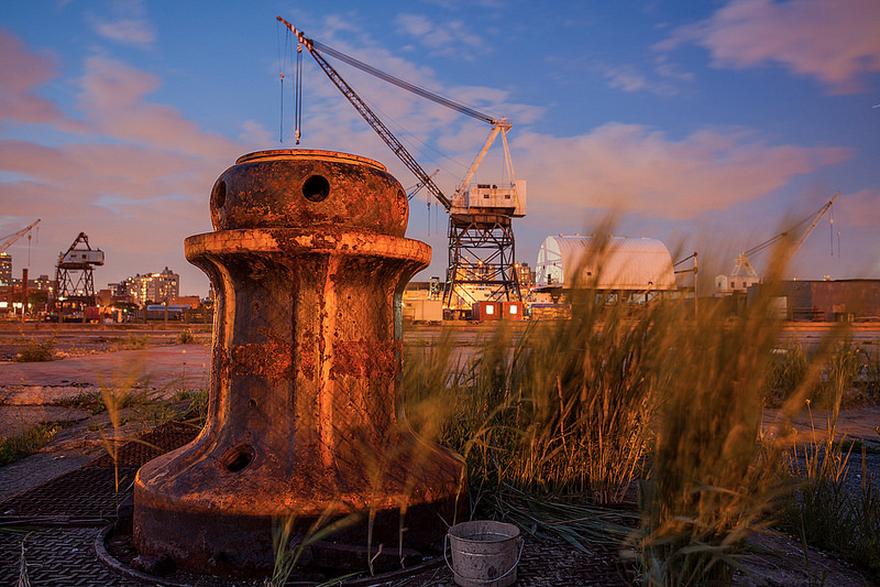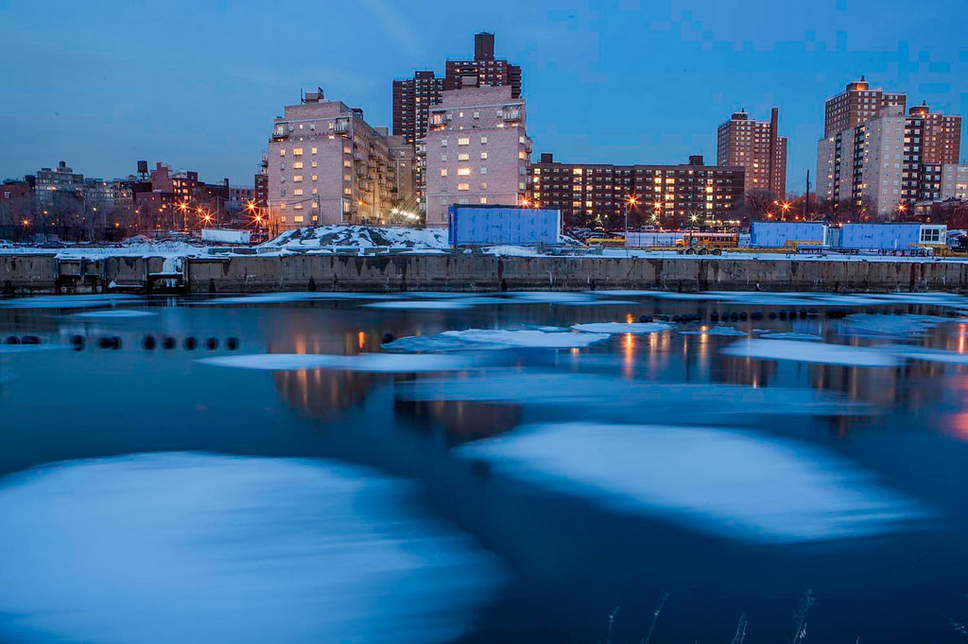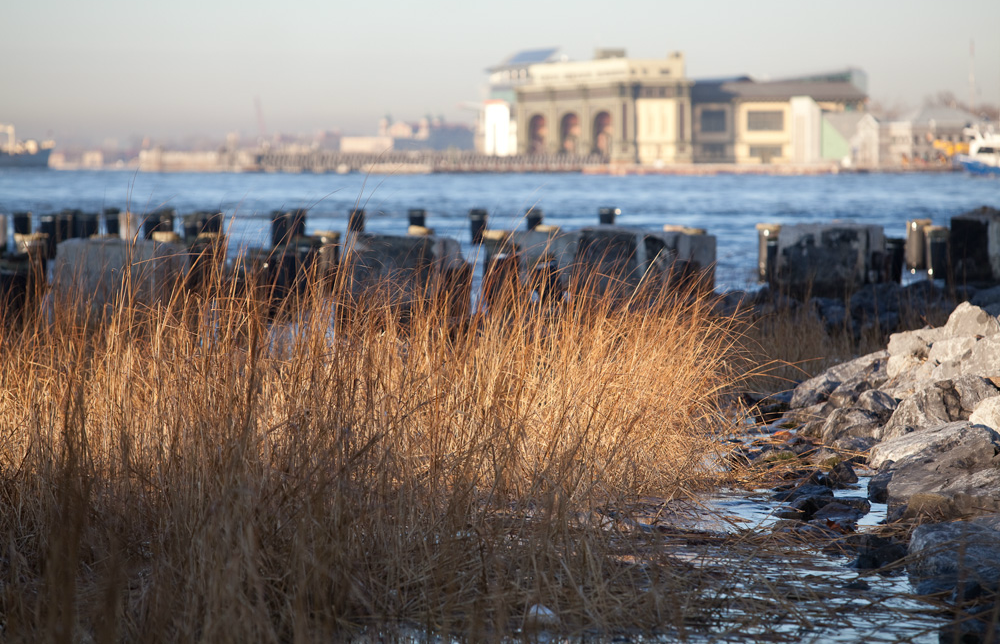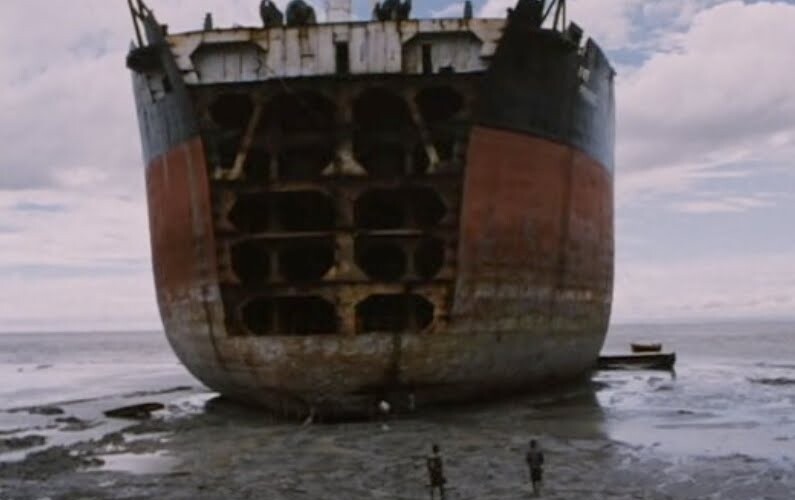Each season, we offer a special opportunity for photographers to explore the Brooklyn Navy Yard with us. Our next Seasonal Photography Tour is taking place this Saturday, July 18 at 11am, departing from the Brooklyn Navy Yard Center at BLDG 92, and visiting sites including the Naval Hospital Campus, one of the Yard’s working dry docks, and other working waterfront sites.
Our judge for this season’s photo contest is one of BLDG 92′s 2015 Visiting Artists. Robin Michals is an associate professor of photography at New York City College of Technology, and she has spent the last several years documenting the rapid pace of change along the Brooklyn waterfront, including participating in Brooklyn Historical Society’s Documenting Sandy exhibit last year. We sat down with Robin to learn more about her experiences on the waterfront:
Tell us a little bit about yourself. How did you get into photography?
Robin Michals: I grew up on the Upper East Side, and I actually studied painting – I have an MFA in painting. At some point it became pretty obvious that the paintings were not very good, but the photographs that I was taking to paint from were kind of interesting, and so I shifted into photography. And still the thing that I am primarily interested in is color.
I feel really fortunate to have this residency at the Navy Yard because it gives me access in the evening – that magic time when the color begins to change and everything is just transformed. It’s been fantastic.
What inspired you to apply for the Visiting Artist program at the Brooklyn Navy Yard?
RM: I’ve been photographing and working on a series called Abused and Reused: The Brooklyn Waterfront since 2008. When I got interested in the Brooklyn waterfront, the transformation was well underway. In 2007 Ikea opened, so I wasn’t there when everything was completely decrepit. But in 2008 I went on a walking tour with Francis Morrone in Sunset Park, and we got into the Bush Terminal, and it just blew me away. I’ve lived in New York my whole life, and I just had no clue. So ever since then I have been very interested in the Brooklyn waterfront and photographing it, and of course the Navy Yard is a key part of that story. I’ve been in there before a number of times, but not with the kind of access that you have as a visiting artist. It’s been so great.
What first drew you to the Brooklyn waterfront?
RM: It’s changing so quickly. And as I became interested in the Brooklyn waterfront, I learned a little bit about the history. Essentially when the ship container is invented, and shipping moves to New Jersey, the waterfront collapses within a decade. And then it was abandoned in the 70’s, 80’s, and into the 90’s, when people started undertaking some serious planning for it, and so that whole trajectory is just completely fascinating.
I also became very interested in some of the environmental issues. The legacy of manufacturing left a lot of the waterfront really, really polluted, and I did a series in 2009 on brownfields. And then I became very interested in the really big environmental issue of the waterfront, which is sea level rise. Brownfields are local, but sea level rise is global, and both of those issues continue to interest me. As well as the development – the changes I’ve seen on the waterfront in less than ten years are just amazing.
I’ve noticed that a lot of your photographs use juxtaposition between the old and new.
RM: I would say that is right in the center of my interest. I love a lot of photography of ruins and the decrepit, but I am more interested capturing change over time in my work.
What are some of your other favorite waterfront sites?
RM: Certainly the Gowanus is amazing in terms of transformation. Between Whole Foods and the Lightstone development, as well as I believe they’re starting to do some dredging for the Superfund cleanup. I’m really interested in Coney Island, because it’s also changing pretty rapidly. Those are two locations I find interesting and where I photograph a lot.
I have also been photographing in a community called Oakwood Beach in Staten Island for about two years. It’s a community that was devastated by Sandy, probably the worst-hit of any area in the city, and so the state is buying back just under 200 homes. When I first went there, it was maybe 50 percent occupied, and now there are probably 10 families still living there. It’s small, about four streets, and I’m photographing that area as it’s basically going back to nature. And then there are people who are staying, which I think was not predicted.
Do you do photography full-time?
RM: I am lucky enough to teach photography. I am an associate professor at City Tech in Downtown Brooklyn, and I teach photography in the Communication Design program. It was actually through City Tech, when I was part of a faculty development grant – we were trying to integrate local history and neighborhood history into curriculum – that I went out to Sunset Park for the first time.
I started at City Tech in 2003. So I’ve been doing it for quite a while, and it continues to be really fun. I’ve worked with the Brooklyn Historical Society, and there was a show of my students’ work there last fall, photographs of Green-Wood Cemetery. I like to take my students to Green-Wood because it’s an amazing place, and it’s very secure and quiet, where you can – excuse the pun – really focus.
What are some of the things you’ve been photographing at the Navy Yard?
RM: Since the announcement that they’re going to build a building on the pier between dry docks 2 and 3, and I’ve been interested in photographing out there. There was a research boat that was there for a while in May [NOAA research vessel Marcus Langseth] that was really interesting. I was lucky enough to get some ice in Wallabout Bay. This was a really cold winter, and things were frozen a lot, which is really exciting for a photographer. Just being there in the evening when the light is changing is great. The oyster beds and the modular housing units are just completely fascinating.
Do you have an idea for a culminating project about the Brooklyn Navy Yard?
RM: When I first started photographing at the Yard, I was photographing what I always photograph, which is the water. But I’ve become very interested in the scale of the spaces, and how that is dictated by its 19th and 20th century uses – how is that being repurposed, and what do you do with that scale. I’m thinking a lot about pairing it with photographs of Coney Island, as kind of “work and play” in Brooklyn, and spaces that were essentially designed for earlier uses that have been repurposed. That’s what I’m thinking now, but I’m about halfway through my residency, so my ideas could change.
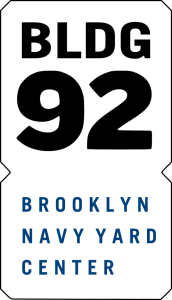
Turnstile Tours offers the Seasonal Photography Tour of the Brooklyn Navy Yard four times throughout the year. The next tour of the 2015 season will be Saturday, July 18 at 11am. Get more information here, and advance ticket purchase is highly recommended. We also offer our Past, Present & Future Tour of the Brooklyn Navy Yard every weekend 2-4pm, and other special themed tours of The Yard. All tours are offered in partnership with and begin at the Brooklyn Navy Yard Center at BLDG 92, which offers free admission to three floors of exhibitions on the Yard’s past and present and a host of great special events and programs.

